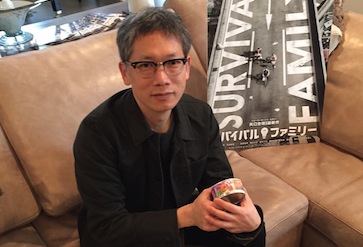
Meditation practice has many benefits.
According to our Association promotion test requirements students are required to be familiar with?meiso ho?(seated meditation practice) and?kokyu ho?(breathing exercises). Recently, a student testing for the rank of Nikyu was asked to describe these practices, and to say how they are important for budo training. He gave a very eloquent answer, which was accepted. After the test, he was privately asked if he actually did practice meditation and breathing. “I tried once,” he replied, “but they didn’t do much for me. What good are they anyway?”
In such a case it would be much better for a student to say plainly that he or she does not practice?meiso ho?or?kokyu ho.?At least this is honest. In any case, we know that this student’s instructor is probably also not clear regarding internal training methods, or at least does not teach them.
Honestly viewing Aikido as a whole, we can say that this situation is the norm, rather than the exception.
Meditation and related breathing exercises have been a vital part of Japanese martial tradition since the yogic practices of Buddhism and Taoism first entered Japan, and particularly since Zen Buddhism, with its emphasis on meditative training, came to be patronized by the ruling warrior class. Samurai during that warring stage were in daily contact with questions of life and death, of intention and concentration. They saw in the meditative discipline of monks a kind of dynamic calm and courage that they needed as soldiers. Monks, also, saw in the warriors the same intense energy and single-minded commitment that was necessary for their own spiritual training. Though their interchange, the martial arts in time became viewed as potential tools for spiritual development; they became known as Budo, martial ways. We have inherited this viewpoint, as exemplified by the internal training undertaken and espoused by the Founder during his life. The statements made by O’Sensei regarding his vision of the martial arts are actually not unique, but have been voiced in one form or another by certain martial practitioners throughout the ages.
This, then, is our tradition, and it is the background that leads us to view Aikido as potentially something more than just combative technique. Why then do many practitioners blithely sidestep the whole subject of internal training? In fact, given the high talk of Aikido philosophy contrasted with the actual practice and training of most Aikido practitioners, an outsider looking in might very well deduce that Aikido is a sham.
Of course many persons practice Aikido only for self-defense, for health reasons, social reasons, or simply as a hobby. That is fine, and desirable. But for the committed and sincere practitioners, who aspire to the deeper truths of martial training, it is unfortunate that the methodology of internal training is not stressed by most Aikido instructors. A simple reason for this may be that persons qualified to teach these facets of Aikido training have always been scarce; today’s generation of teachers have mostly been raised with, at best, a minimal exposure to this type of training.
The benefits of?meiso ho?and?kokyu ho,?so crucial to martial arts skill, include the following:
- Development of?joriki?(the power of unified concentration)
- Increase in?kiai?(vital energy) and free circulation of energy in the body.
- Improvement of?shisei?(posture) and general health.
- Development of calm in the face of danger or stress.
- Reduction of stress and stiffness.
- Development of proper breathing and use of the?hara?(lower abdomen, including the?tanden?or “one point”).
What should the student interested in internal training do? Since?meiso ho?and?kokyu ho?are part of our formal promotion test requirements, it is mandatory that students have an experience of them and understand their method and intention. Ultimately, students with no interest in gaining this minimum understanding are ill-prepared to take on instructor positions, since they are unable to teach a portion of our minimum test requirements.
Students should not hesitate to ask their instructors to explain and teach internal training. Express an interest in this training, and it will be addressed.
Take the time to at least experience our internal training methods. When it is your turn to answer questions during your promotion test, you will feel better knowing that your answers are sincere and based on your own solid experience.
It should be our goal not simply to follow the path of O’Sensei, but to be better ? stronger, wiser, better educated, and better instructors ? than O’Sensei was. Even it is not possible to surpass our teachers, we must train with the spirit of doing so using the full range of trining methods that have been handed down to us. In this way, Aikido will be successfully passed from generation to generation ? without weakening.
Fumio Toyoda,?Aikido World, Vol 11, No. 5










